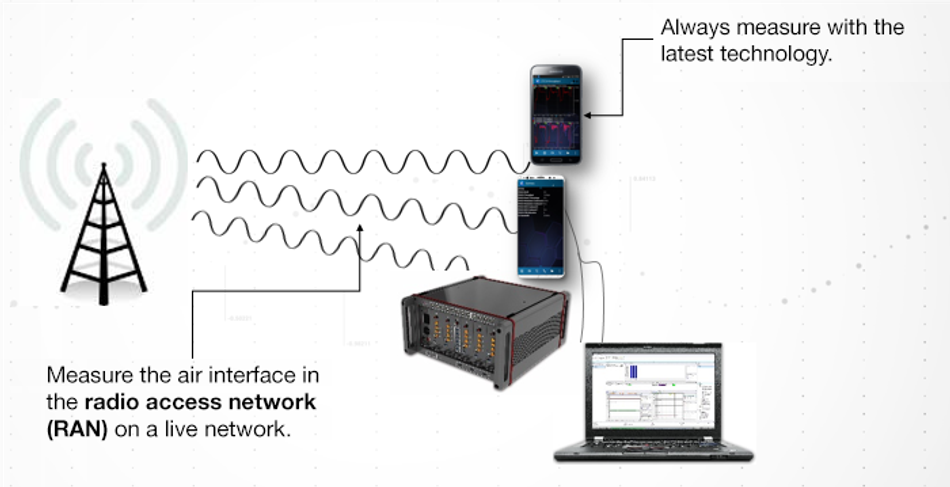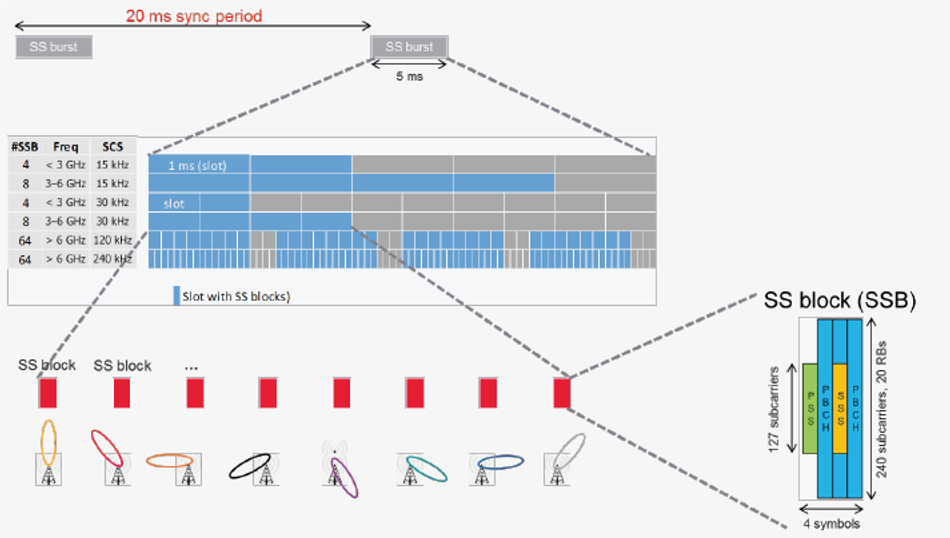5G New Radio Drive Testing Methodology Refined with Two Key Elements
5G New Radio (NR) technology implementation is moving at an accelerated pace. Live network testing is a crucial operation to achieve and maintain optimal network performance.
5G New Radio (NR) technology implementation is moving at an accelerated pace. Live network testing is a crucial operation to achieve and maintain optimal network performance.
Compared to 4G technology, 5G utilizes a much wider bandwidth operating at new frequencies (mostly 3.5 GHz and 28 to 29 GHz) to enable faster data transmission. What really sets 5G apart from 4G, though, is that it enhances massive multiple-input / multiple-output (MIMO) with beamforming, which allows multiple user and service types to access the network simultaneously. Massive MIMO and beamforming help 5G further improve access speed and network capacity.
Benefits aside, advanced technology presents advanced challenges. Since 5G uses MIMO and beamforming, there is no cell-level reference channel. Instead, each cell has one or more synchronization signal block (SSB) beams, as seen in Figure 1. The different SSB beams of one cell transmit at different times to avoid intracell interference.
Both scanners and test user equipment (UE) enable 5G NR field testing. A scanning receiver can detect many reference signals, including very weak SSB beams. This type of test equipment is best suited for making coverage measurements.
Scanners can also detect in-band and out-of-band interference, unlike UE-based testing, which is constrained to one operator.
On the other hand, scanner antennas have different characteristics compared to mobile UE antennas. Antenna gain and MIMO performance depend on the devices that are “talking” to the cell. In 5G NR, cells use MIMO antenna arrays, further increasing dependence on end devices.
In addition, the use of network slicing increases with 5G. With network slicing, the network will automatically detect the service type and allocate network resources for the specific applications to ensure an optimal user experience.
Since the network operates differently depending on the application, the bulk data transfer method does not provide the full quality of experience (QoE) picture. The only way to accurately assess end-to-end QoE in 5G NR is to use active tests conducted at the device end, as shown in Figure 2. Accessibility, retainability, and time to content — the three crucial, measurable key performance indicators (KPIs) related to the QoE for any type of transaction — are only visible and measurable at the device end.
For an accurate QoE measurement, it is essential to test the latency and peak throughput of the connection. Conducting root-cause analysis pinpoints the location of the connection bottleneck: device end, RAN, core, or back-end server. This type of analysis can also help identify points of failure for dropped calls or handover issues, for example. New test schemes should provide quality of service prediction on a mean opinion score scale for different application types, including VoIP, streaming video, live TV, and web browsing. This prediction allows for a quick check of the 5G NR end-to-end performance with different types of applications without having to check the QoE by application.
Live network testing in the 5G era requires both scanners and UEs equipped with the latest radio access technology. Figure 3 shows the various test units required for 5G NR field testing.

Channel and coverage measurements require a scanning receiver. UE-based active field testing helps validate functionalities such as traffic channel beams, mobility, Long Term Evolution (LTE) interoperability, and handovers between cells. Changes in the network architecture require UE-based active testing at the application layer to provide 5G NR QoE measurements and translate the user experience into measurable KPIs.
For more information on this topic, you can download the white paper Redefining 5G New Radio Drive Testing. Visit our Nemo Solutions web page to learn more about test solutions addressing 5G NR drive testing challenges.
$300,000 in test gear prizes up for grabs.
Accurate test gear accelerates innovation – so don’t miss Keysight University Live from the Lab. Join us for an exclusive sneak peek at the never-before-seen test gear, tips from industry vets, and a chance to win prizes like oscilloscopes, RF, and bench equipment. Gear up now…


